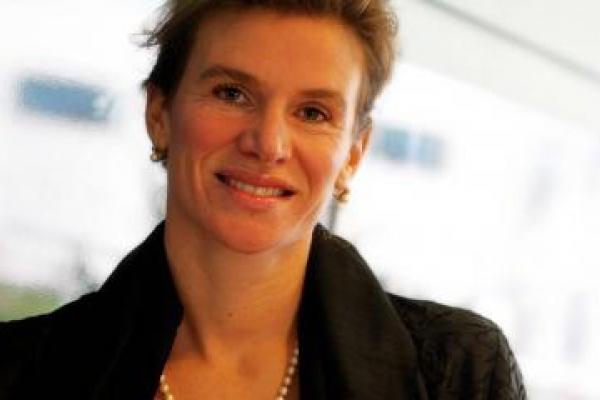EU-funded researchers are uncovering links between mental stress and physical troubles, including cardiovascular disease.
Special series

Researchers on a mission
The EU is on a mission with researchers to protect our planet and society.
By helping researchers discover new ways to improve people’s lives, and to protect us from climate change and global health shocks, the EU is building a better future for all of us.
Most popular
-
1By Sofia Sanchez Manzanaro
-
2By Anthony King
-
3By Jessica Berthereau
-
4By Horizon Staff
-
5By Anthony King
Top videos
From cycling to sex, skin patches promise to make their mark
6 June 2024
The hydropower renaissance in Europe
4 June 2024
Past articles
After the discovery of the so-called ‘God particle’, scientists could turn the world's biggest particle accelerator to uncovering dark matter, or even shedding light on parallel universes.
Doctors should routinely test people’s feet to check for diabetes, that’s according to a former UK Health Minister and MEP who has become a campaigner for the disease after being diagnosed with it himself.
Drivers may soon be able to take their hands off the wheel and their eyes off the road in their own cars, leaving the driving to modern technology. That is the conclusion drawn by the partners of the SARTRE project, after recent successful testing of road train ‘platooning’ in Sweden. However, more human barriers remain to be lifted before it could become commonplace.
Grants should only be given to research organisations who have received an award for female-friendly policies, according to a UK scientist who was overlooked for a Nobel Prize on pulsars even though she did much of the work.
Marisa Matias is a Portuguese MEP of the European United Left / Nordic Green Left group (GUE/NGL). A social scientist by training, she is very active in the areas of public health, science and research. Why should science be calling out for women? She believes it will help tackle Europe’s brain drain. ‘It will help jugulate the brain drain Europe is suffering and boost gender equality,’ she says.
For scientists, packing up their lab coats and microscopes and heading to foreign laboratories can really pay dividends. Thanks to initiatives like Marie Skłodowska-Curie Fellowships, women are benefiting more and more from making a move abroad.
An experimental tablet treatment for child diabetes, where youngsters have traditionally had to inject themselves with sugar controlling insulin, could end up eradicating the disease altogether, according to the scientist leading the European NAIMIT project.
Professor Christian Keysers first saw the film Dr. No as a teenager. Watching the scene where James Bond wakes up to discover a large, hairy, poisonous spider crawling up his arm, he thought he could almost feel the spider on his own skin.
Economist and author Mariana Mazzucato argues that for innovation to flourish in Europe, its governments must become more entrepreneurial and invest in technologies that private investors consider too risky.
Across the Atlantic, scientists are also making use of open access journals. In Canada, the national medical association started publishing a totally new, fully ‘open’ journal in January.
While more and more women are reaching senior levels in science and engineering, the aspiration of reaching gender equality is not yet fulfilled. Data from the She Figures 2012 report, a major EU publication that presents Europe-wide data on women in science from tertiary education through to the job market, show that there are nowhere near enough women at the top levels of science and research.
Diabetes is on the rise all around the world. In the EU alone, there are 33 million people diagnosed with diabetes. They include people of all ages and from all walks of life. The two main forms are insulin-dependent Type-1 diabetes and non-insulin-dependent Type-2 diabetes. Type-1 diabetes, which develops mainly in children and adolescents, is more aggressive. However the disease is not a tragedy, as three ‘Type-1’ patients explain.
How do you encourage civil servants to take a long, hard look at what they do so as to improve public services for citizens? And how do you kick-start new thinking to address society’s plague of problems? For a start, you need to discover users’ thoughts about basic design problems in the services they use, according to Danish political scientist Christian Bason.
They can burn and blister your skin, stop you from getting a mortgage, and even kill you. Plants and animals carried around the world by tourists and trade are costing the European Union over EUR 12 billion per year. Even these estimates are conservative as the data relates mostly to land-based invasive species.
‘You will never become a scientist!’ For his teachers, a science career for John Gurdon, was no more than hypothetical. But the British professor who won the 2012 Nobel Prize for Medicine has only one piece of advice for aspiring researchers: ‘Don’t give up!’
Ash dieback is an invasive fungus that threatens to decimate stocks of European ash.
Africans and Asians who migrate to Europe have a higher risk of diabetes than indigenous people as they adjust to a different diet and lifestyle. By looking at the development of diabetes in these groups, researchers hope to find out more about the disease and how to combat it both in Europe and worldwide.
Eat well and exercise. That is the simple message that could help reverse the spread of one of Europe’s most troubling epidemics – Type 2 diabetes.
Professor Pratibha Gai’s modified electron microscope is helping scientists develop new medicines and energy sources.
Vehicles without drivers can go far, very far. Such as the ones from the VIAC project, led by Professor Broggi from VisLab at the University of Parma, Italy. Its vans drove from Parma to Shanghai, China in three months, without much human intervention.
Weekly news alert






























